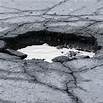Two-Thirds of U.S. Drivers Support Increased Federal Funding to Improve Roads
 |
AAA Says Policymakers Failing to Connect with Motorists' Practical Concerns
WASHINGTON--April 25, 2013: Sixty-two percent of U.S. motorists believe the federal government should invest more money to improve roadways, according to a recent public opinion poll conducted by AAA. The vast majority of drivers (81 percent) also believe the federal government should do more to improve the condition of roads and bridges.
"Most Americans recognize the need for increased transportation funding because they drive over potholes and bumpy roads every day," said Robert L. Darbelnet, President and CEO of AAA. "Unfortunately, the main concerns voiced by motorists about transportation and driving differ markedly from the points generally expressed by policymakers to promote funding legislation."
When asked for their concerns regarding transportation and driving their cars, issues identified by drivers included the reliability and safety of their car (34 percent) and the direct financial cost of driving (19 percent). Other major concerns included the behavior of other drivers (15 percent), safety/road accidents (15 percent) and the gas mileage/fuel efficiency of their vehicle (15 percent). According to AAA's recently released 'Your Driving Costs' report, the average cost to own and operate a car this year rose 1.96 percent to 60.8 cents per mile, or $9,122 per year, based upon 15,000 miles of annual driving.
"Policymakers and transportation advocates are failing to connect with the public on the practical concerns that matter most to motorists," continued Darbelnet. "Motorists want to hear about how their elected officials can improve their daily commute by repairing the pothole down the street or the bumpy road around the corner."
Nearly seven out of ten (68 percent) motorists believe the federal government should make "reducing congestion on the roads" a top transportation priority. Traffic jams and crowded roads waste billions of dollars a year in time and fuel, and causes significant frustration for many drivers. Federal transportation funding can support increased capacity and expanded roadways.
Motorists who feel that the federal government should increase taxes or fees to improve roadways support a number of options for increasing transportation funding, including:
- Replacing the per-gallon gas tax with a national gasoline sales tax (55 percent)
- Creating a new national sales tax dedicated to transportation (47 percent)
- Expanding the use of tolls to Interstate highways where tolls are not currently collected (47 percent)
- Creating a carbon tax on fossil fuels (45 percent)
- Replacing the federal gas tax with a per-miles-driven fee (37 percent)
- Creating an energy tax on all sources of energy (35 percent)
- Increasing the federal per-gallon gas tax (27 percent)
"The public seems very willing to examine innovative transportation methods to improve road quality," continued Darbelnet. "AAA is dedicated to examining all funding options and educating policymakers on the need to fully fund improvements for America's roads and bridges."
Motorists overwhelmingly (83 percent) remain concerned about wasteful government spending on transportation. AAA has worked with Congress to implement reforms, such as eliminating earmarks, streamlining bureaucratic oversight and accelerating project development as part of Map 21, the recently passed federal transportation authorization law. AAA will continue to push for improved reforms to reduce wasteful spending as Congress debates transportation funding.
This report presents the findings of an omnibus telephone survey (654 landline and 354 cell phone) consisting of 1,008 adults (503 men and 508 women) living in the continental United States. A screener question identified 817 current motorists who were asked the remainder of the question list. The study has a 95 percent margin of error of ±4.0 percent.


